Best garden tools.
Gardening can be a rewarding and fulfilling hobby, but to truly maximize your productivity and create a thriving garden, having the right tools is essential. Whether you are a seasoned gardener or just starting out, using the appropriate garden tools can make a significant difference in the outcome of your gardening endeavors. In this article, I will explore the best garden tools you need for a productive season. From essential hand tools to power tools, specialized equipment, and tips for selecting the right tools, this guide will equip you with the knowledge to create a well-equipped garden toolkit that meets your specific needs. So, let’s dive in and discover the essential tools that will help you cultivate a flourishing garden all season long.
This is a pinnable post. Tap or hover over any image in this post to pin to your Pinterest Boards.

Introduction: Importance of Having the Right Garden Tools
Why Using the Right Garden Tools Matters
Gardening can be a rewarding and therapeutic activity, but let’s face it, it can also be hard work. That’s where having the right garden tools comes in handy (pun intended). Using the right tools can make all the difference between a productive season and a frustrating one. So, before you start digging and planting, let’s explore why having the right garden tools is so important.
Firstly, using the right tools ensures that you can work efficiently and effectively. Imagine trying to plant a row of delicate seedlings with a blunt shovel or rake. It’s like trying to cut a steak with a butter knife – frustrating and ineffective. With the right tools, you can save time and energy, making your gardening experience more enjoyable.
Secondly, using the right tools helps you achieve better results. You wouldn’t use a hammer to screw in a nail, would you? Well, the same principle applies to gardening. Each tool is designed for a specific task, whether it’s digging, pruning, or raking. By using the right tool for the job, you can ensure that your plants are properly cared for, leading to healthier growth and a bountiful harvest.
Now that we understand the importance of having the right garden tools, let’s explore the essential hand tools every gardener needs to have.
Essential Hand Tools for Every Gardener
Shovels and Spades
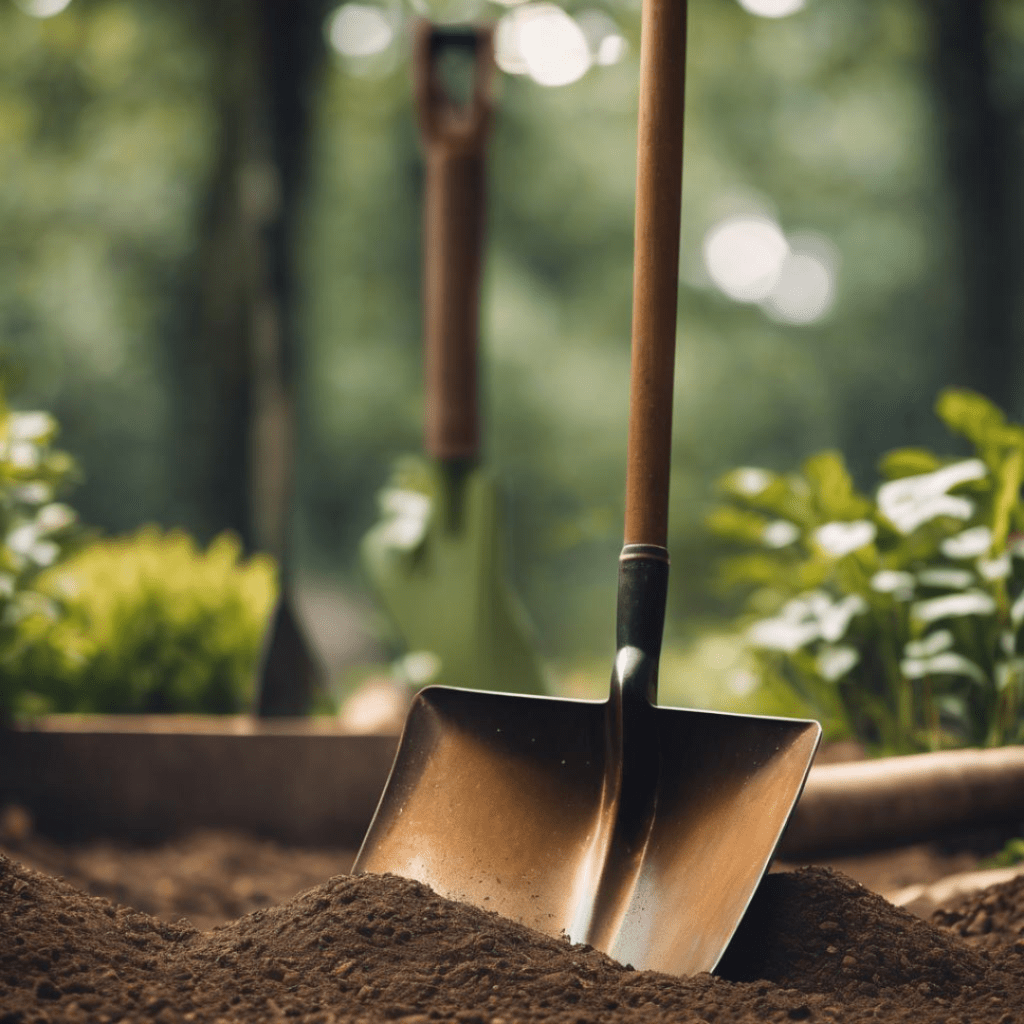
Shovels and spades are the workhorses of any garden. Whether you’re digging a planting hole or turning over soil, these tools are essential. Look for ones with sturdy handles and sharp blades to make your digging tasks a breeze.
Shovels and spades are essential tools in any gardener’s arsenal, and there are several reasons why they are considered among the best for various gardening tasks:
- Versatility: Shovels and spades are incredibly versatile tools that can be used for a wide range of gardening tasks. Whether you’re digging, transplanting, edging, or moving soil, these tools can handle various jobs in the garden.
- Digging and Excavation: Their primary function is digging and excavating soil. The sturdy, flat blades of shovels and spades make them effective for turning over soil, creating planting beds, and digging holes for planting trees, shrubs, or other garden plants.
- Efficient Soil Movement: Shovels are particularly efficient for moving large quantities of soil from one place to another. Whether you’re filling raised beds, leveling the ground, or transferring soil to a wheelbarrow, shovels and spades get the job done efficiently.
- Planting and Transplanting: The pointed or flat blade of a spade is ideal for planting and transplanting. It allows for precise digging, making it easier to create holes for new plants without disturbing the surrounding soil too much.
- Edging and Trenching: The straight edges of shovels and spades make them excellent tools for creating clean edges around garden beds and pathways. They can also be used for trenching, which is useful for irrigation, laying cables, or creating defined borders.
- Time-Tested Reliability: Shovels and spades have been used in gardening and agriculture for centuries, proving their reliability over time. Their straightforward design and functionality contribute to their enduring popularity among gardeners.
In summary, shovels and spades are indispensable tools in the garden due to their versatility, efficiency, durability, and adaptability to various gardening tasks and soil types.
Garden Forks
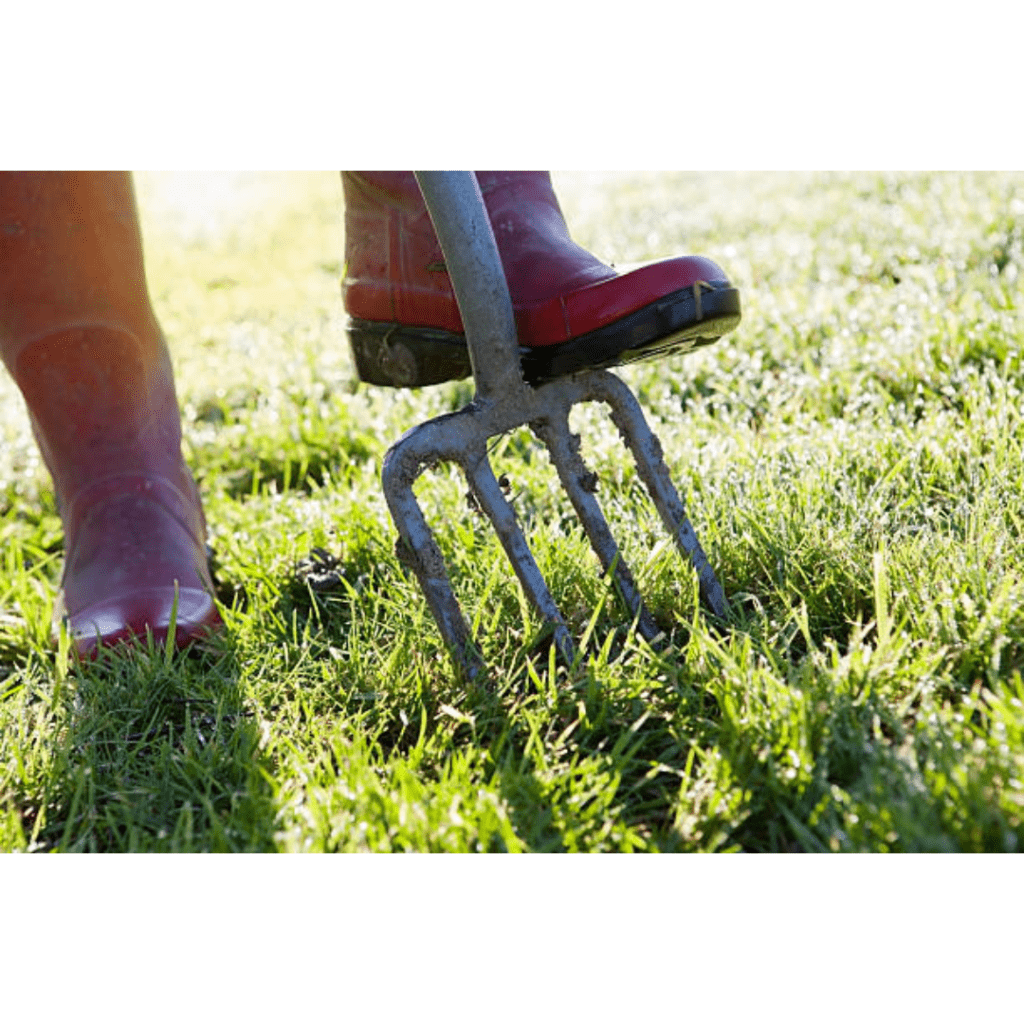
Garden forks are like the superheroes of the gardening world. With their sharp tines and sturdy construction, they help loosen compacted soil, remove weeds, and prepare beds for planting. Plus, they’re great for a little upper-body workout. Who needs a gym membership when you have a garden fork, right?
Garden forks are versatile tools that offer several advantages, making them among the best garden tools for various tasks.
Here are reasons why garden forks are highly regarded:
- Soil Aeration: Garden forks are excellent for aerating the soil. When inserted into the ground and lifted, the tines create air channels, allowing better oxygenation of the soil. This promotes healthy root development and enhances overall soil structure.
- Breaking Up Compacted Soil: The sturdy tines of a garden fork are designed to penetrate compacted soil effectively. By breaking up compacted soil, garden forks improve water drainage, root penetration, and nutrient absorption for plants.
- Harvesting Root Vegetables: The gentle yet effective action of a garden fork is ideal for harvesting root vegetables like potatoes, carrots, and beets. Inserting the fork around the plants and lifting gently helps retrieve the crops without damaging them.
- Turning Compost: Garden forks are handy for turning compost piles. The tines allow for effective aeration, helping to speed up the decomposition process and ensuring that the compost is well-mixed.
- Lifting and Dividing Plants: When dividing perennials or lifting plants for transplanting, garden forks provide a less disruptive alternative to shovels. The tines can be worked around the plant to gently lift it from the soil.
- Durability: Garden forks are typically constructed with durable materials, such as steel or stainless steel, ensuring they can withstand the demands of heavy-duty use. Proper maintenance can extend their lifespan.
In summary, garden forks are considered among the best garden tools due to their versatility, soil-friendly properties, and effectiveness in tasks ranging from aeration to harvesting. Their durability and ergonomic design further contribute to their popularity among gardeners.
Hand Trowels and Cultivators
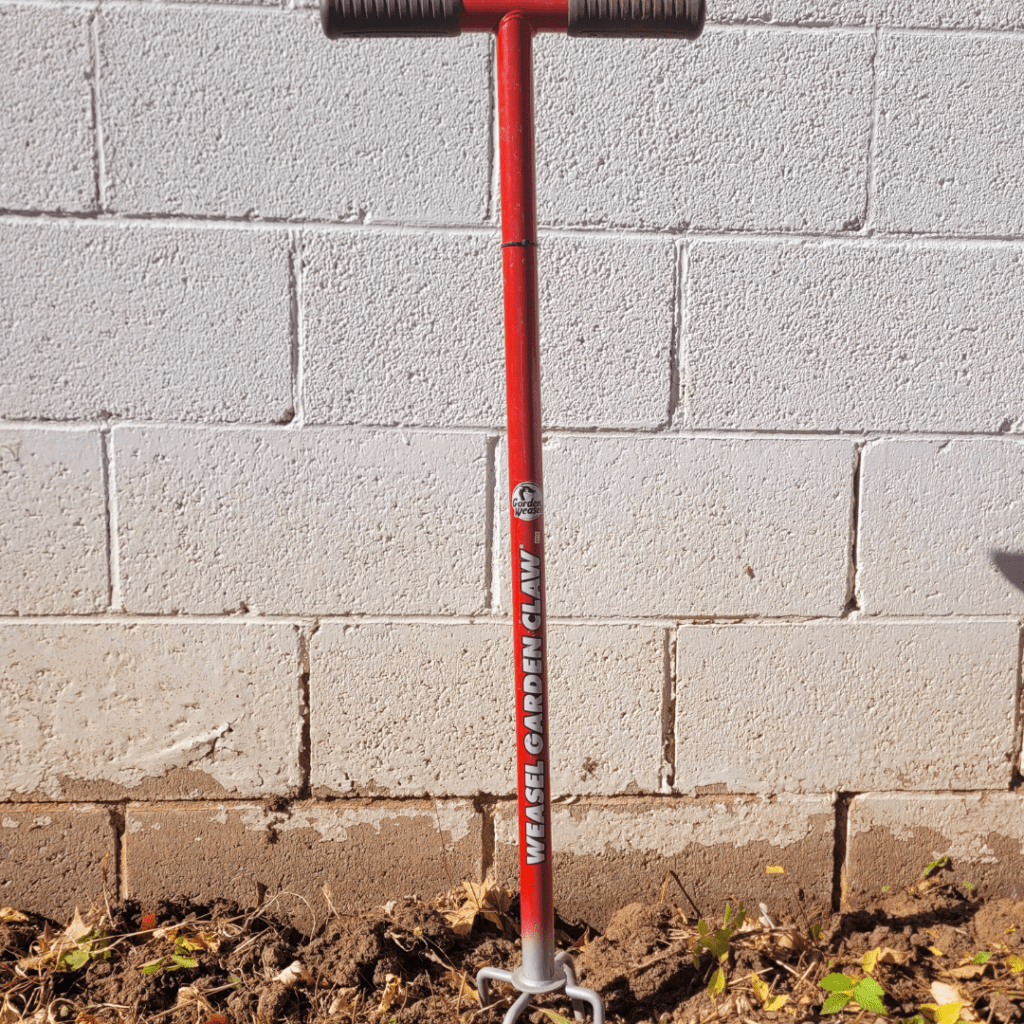
Hand trowels and cultivators are like the Batman and Robin of gardening tools. These compact tools are perfect for precision work, such as transplanting seedlings or loosening soil in tight spaces. They’re also great for loosening up those pesky weeds that seem to pop up everywhere. Just watch out for any unsuspecting earthworms. They’ll thank you for the gentle approach.
In the above photo is my trusty Weasel Garden Claw, which I absolutely love! I love this tool so much that I wrote a whole separate post about it and how effective it is in my garden! Be sure to check it out at the following link!
How to Use the Hand Twist Claw Tiller: Tackling Tough Soil
Now that we’ve covered the essential hand tools, let’s move on to the power tools that can make your garden maintenance a breeze.
Must-Have Power Tools for Efficient Garden Maintenance
Lawn Mowers
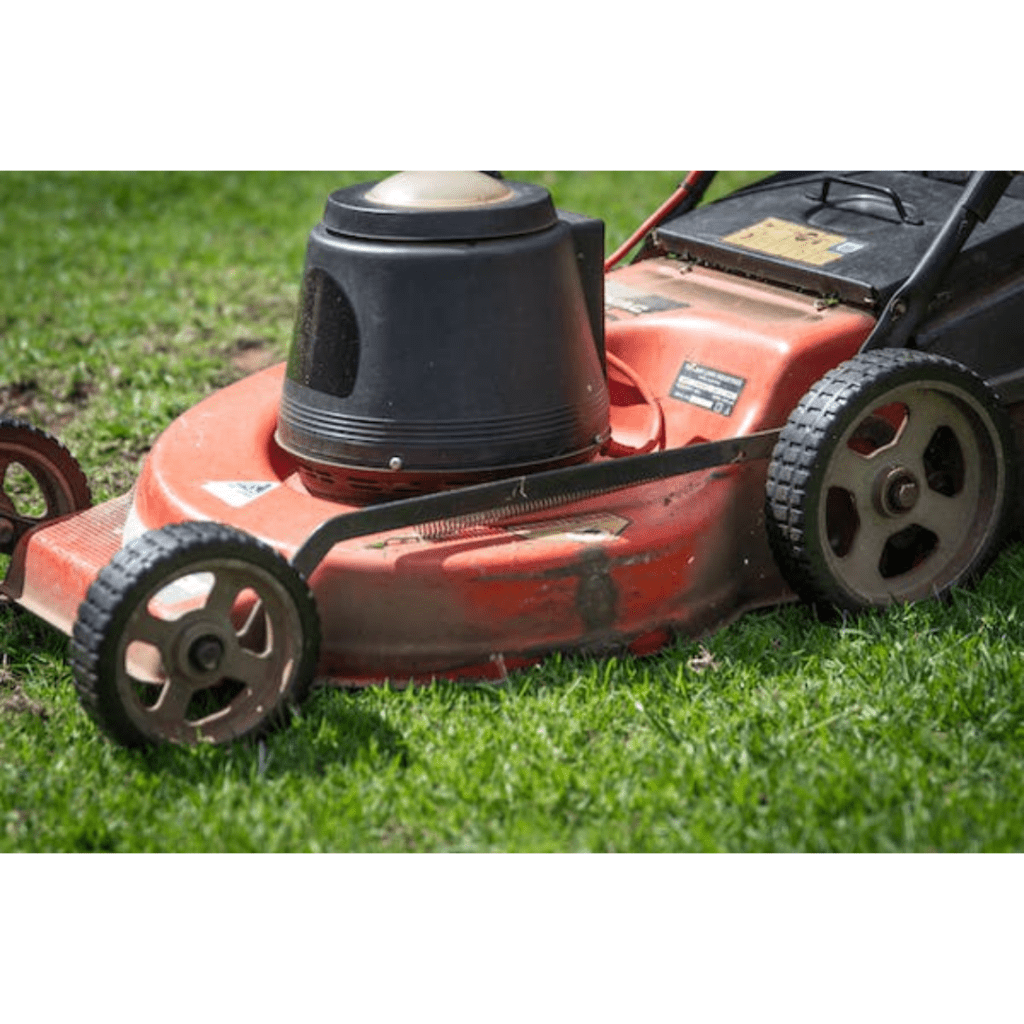
Ah, the sweet sound of a lawn mower on a Sunday morning and the aroma of freshly cut grass! If you have a sizable lawn to maintain, a good lawn mower is essential. Whether you prefer a manual push mower for a little extra exercise or a fancy self-propelled one, a well-maintained lawn is just a few passes away.
String Trimmers
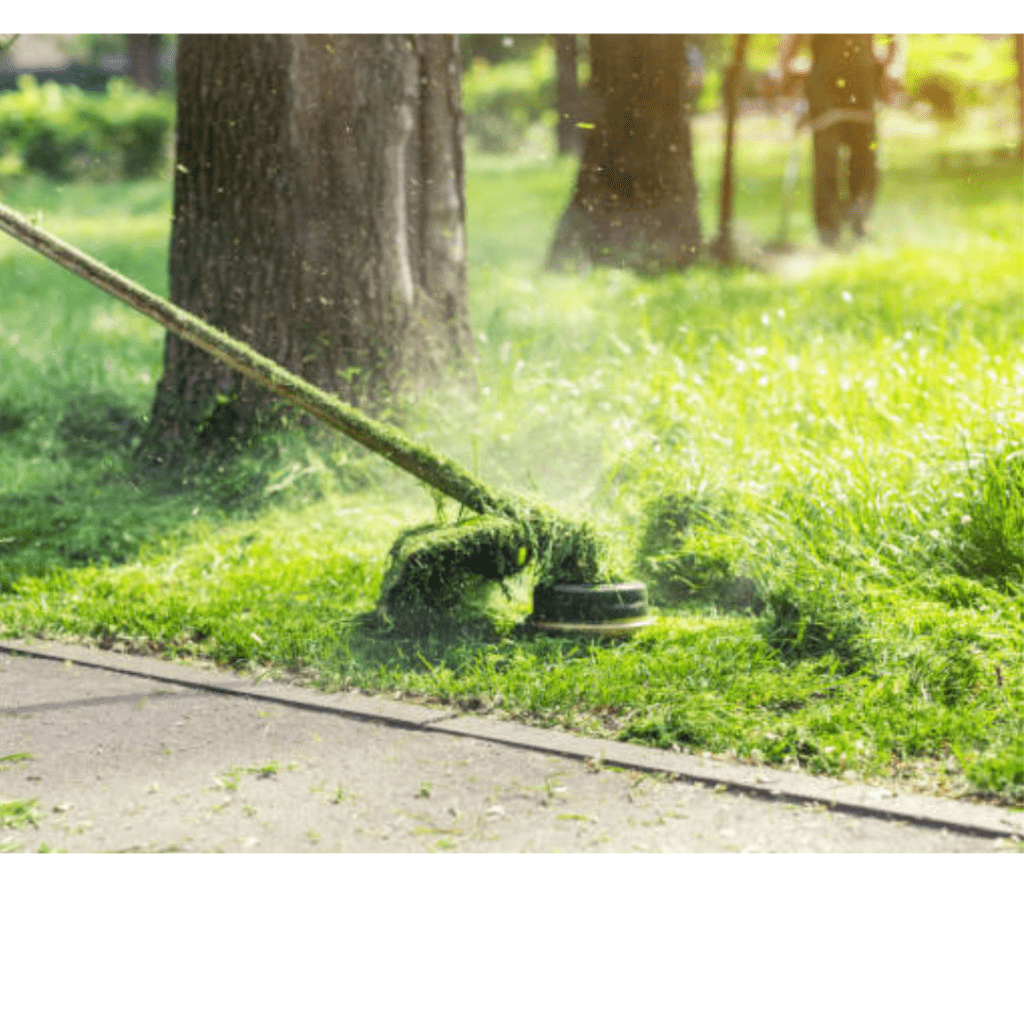
String trimmers, also known as weed eaters or whipper snippers (yes, that’s a real term), are the secret weapon against unruly grass and weeds. These handy tools make it easy to trim grass in hard-to-reach areas and give your lawn that well-manicured look. I love these things! They can go around anything, including in between garden beds!
These weed whackers are valuable garden tools that offer several advantages, making them among the best tools for specific tasks in the garden.
Here are reasons why weed eaters are highly regarded:
- Precision Trimming: Weed eaters are designed for precise trimming and edging along paths, flower beds, and around trees and structures. Their lightweight and maneuverable design makes it easy to achieve clean, professional-looking lines.
- Versatility: Weed eaters are versatile tools that can be used in various settings. They can tackle both grassy areas and tougher vegetation, making them suitable for a range of landscaping tasks.
- Time Efficiency: Weed eaters are efficient at quickly tackling overgrown areas, saving gardeners time compared to manual trimming with shears. Their cutting speed and agility allow for faster completion of tasks.
- Access to Hard-to-Reach Areas: The slender design of weed eaters enables access to tight or difficult-to-reach spaces, such as along fences, around rocks, and in corners of the garden where larger tools may struggle to navigate.
- Portability: Weed eaters are typically lightweight and easy to carry, making them portable tools that can be used across the entire garden. Cordless models provide even more flexibility by eliminating the need for electrical outlets.
- Ease of Use: Weed eaters are generally easy to use, even for individuals with limited strength or gardening experience. Their straightforward operation and minimal learning curve make them accessible to a wide range of users.
In summary, weed eaters are considered among the best garden tools due to their precision, versatility, time efficiency, access to hard-to-reach areas, and user-friendly features. The variety of models, including cordless options, further enhances their appeal for gardeners of all skill levels.
Leaf Blowers
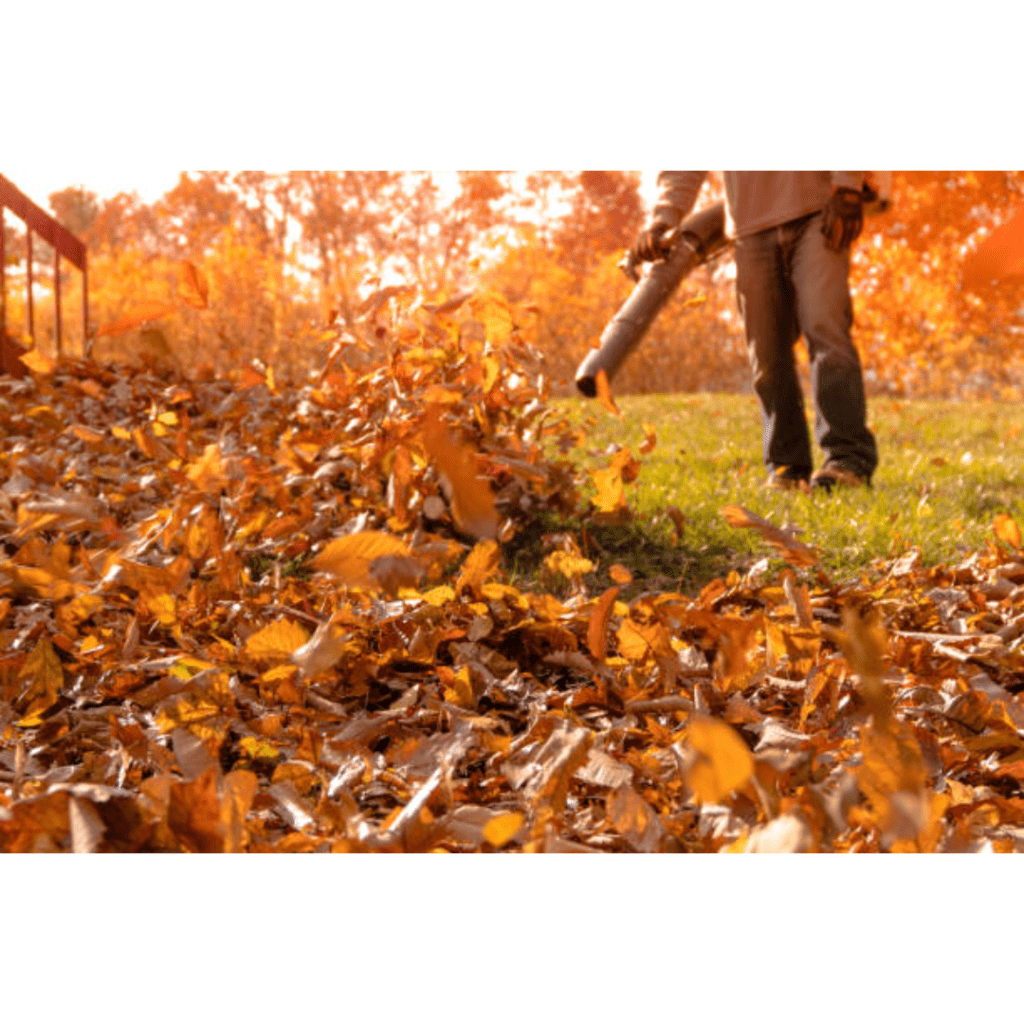
Fall is a beautiful season, but when it comes to leaf clean-up, it can feel like an endless battle. Enter the leaf blower, your trusty sidekick against the leaf invasion. With a good leaf blower, you can gather those colorful fall foliage into neat piles, making your yard clean-up a breeze. My kids love these things! They make fall clean-up fun! For just $50 bucks a piece, each one of your kids can have one and they will have a blast blowing leaves around to the designated areas every fall (or at least that is the goal!)
Now that we’ve covered the power tools, let’s dive into the specialty tools that can make your gardening tasks even easier.
Specialty Tools for Specific Gardening Tasks
Pruning Shears
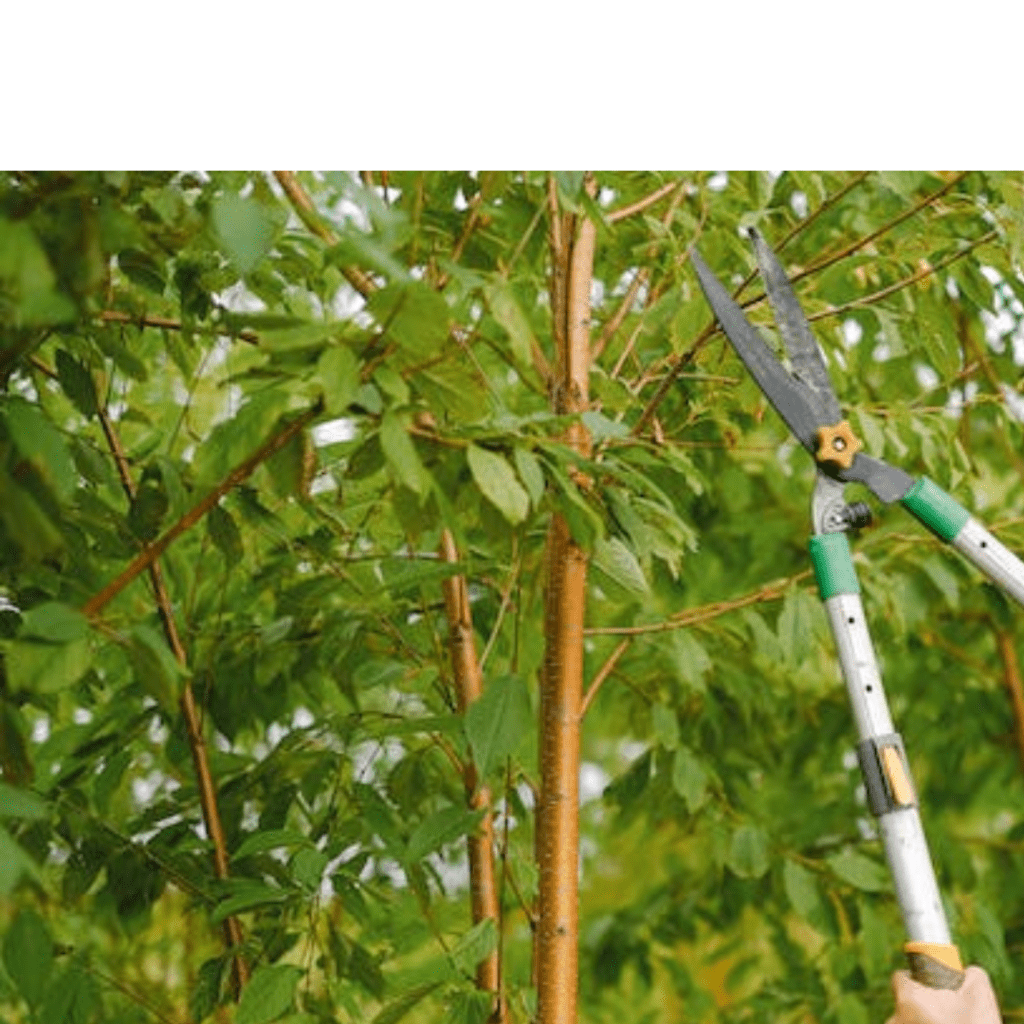
Pruning shears, also known as secateurs, are like the hairdressers of the plant world. These handy tools are essential for trimming and shaping plants, removing dead branches, and encouraging healthy growth. Just be careful not to go overboard with the trimming!
Garden Hoes
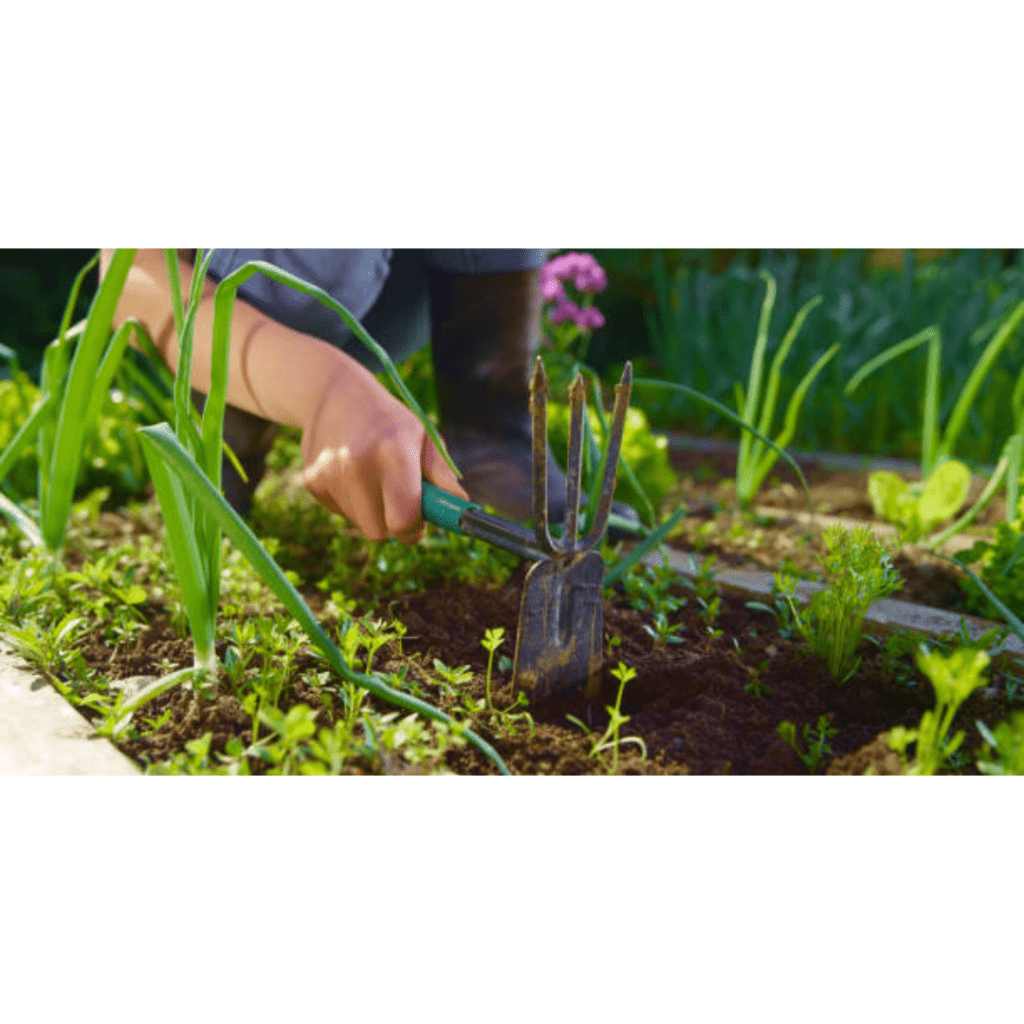
Garden hoes are practical tools for cultivating soil, removing weeds, and creating furrows for planting seeds. With a good garden hoe, you can channel your inner farmer and tackle those garden chores with ease. Just don’t forget to wear your straw hat and overalls for the full effect! This season, I need to purchase a new one for my own garden! I have linked the one I am buying if you are interested. This is a fairly reasonably priced garden hoe with a wooden handle that will work just fine for me!
Garden Rakes
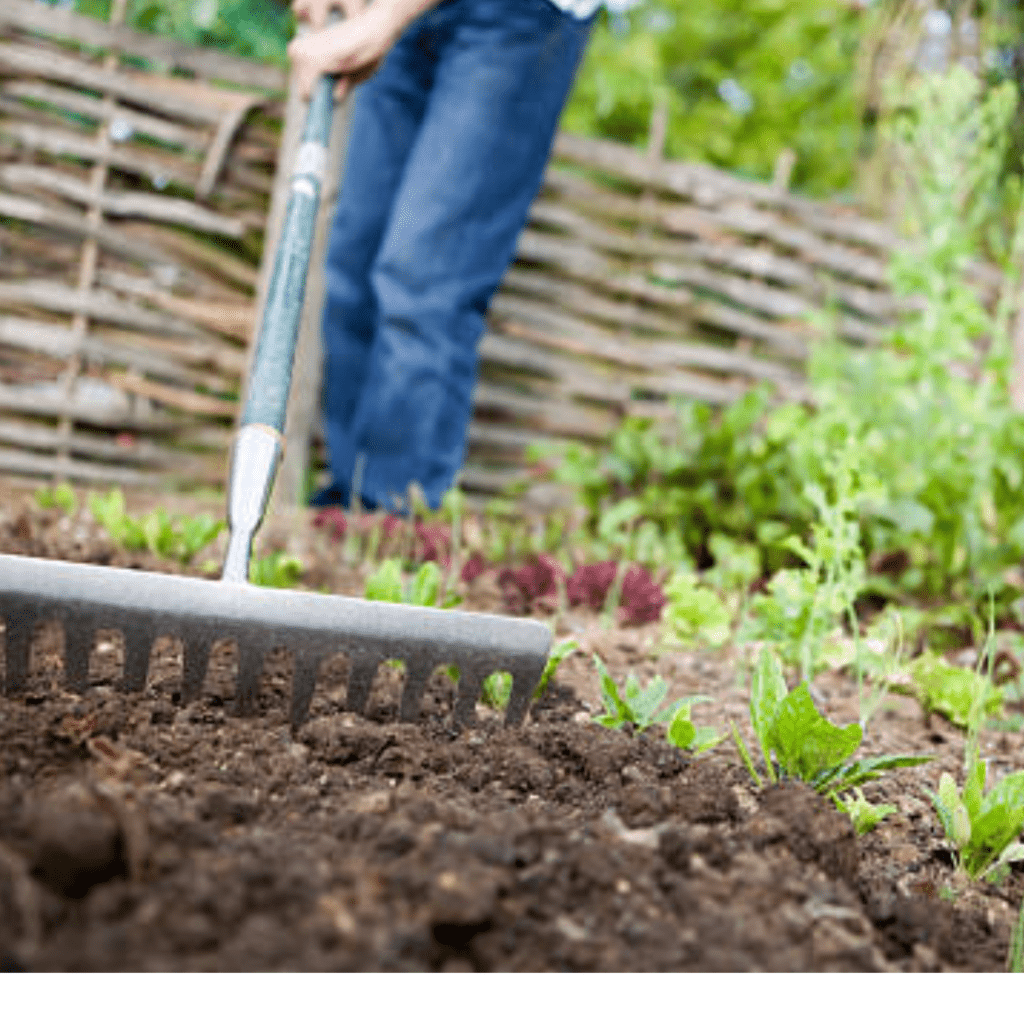
Ah, the humble garden rake. It may not have the glamour of a superhero cape, but it sure knows how to get the job done. With its sturdy tines, a garden rake is perfect for smoothing soil, removing debris, and leveling out mulch or gravel.
Tools for Soil Preparation and Planting
Garden Spades
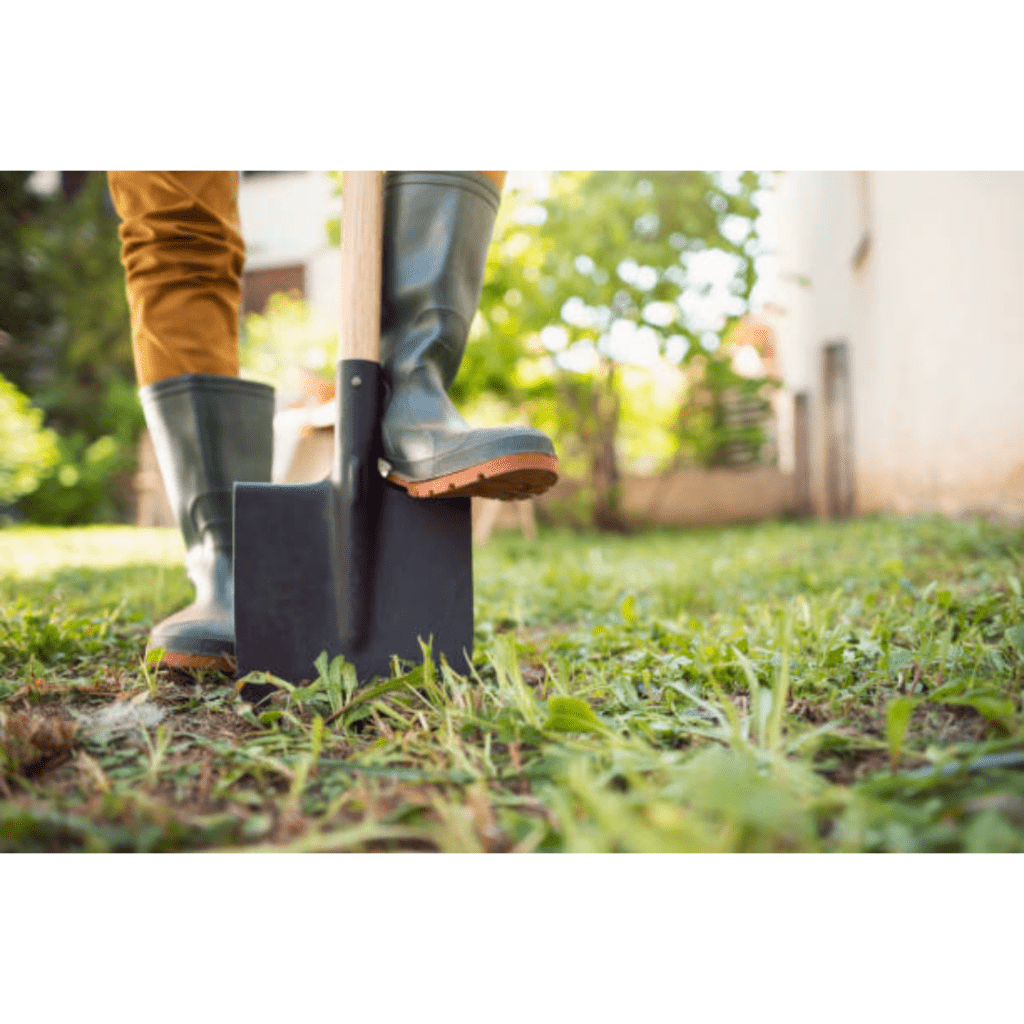
When it comes to soil preparation and planting, a good garden spade is a must-have tool. It’s like a trusty sidekick that helps you dig, turn, and aerate the soil effortlessly. Whether you’re creating new garden beds or transplanting seedlings, a sturdy garden spade will make the job much easier.
Soil Testing Kits
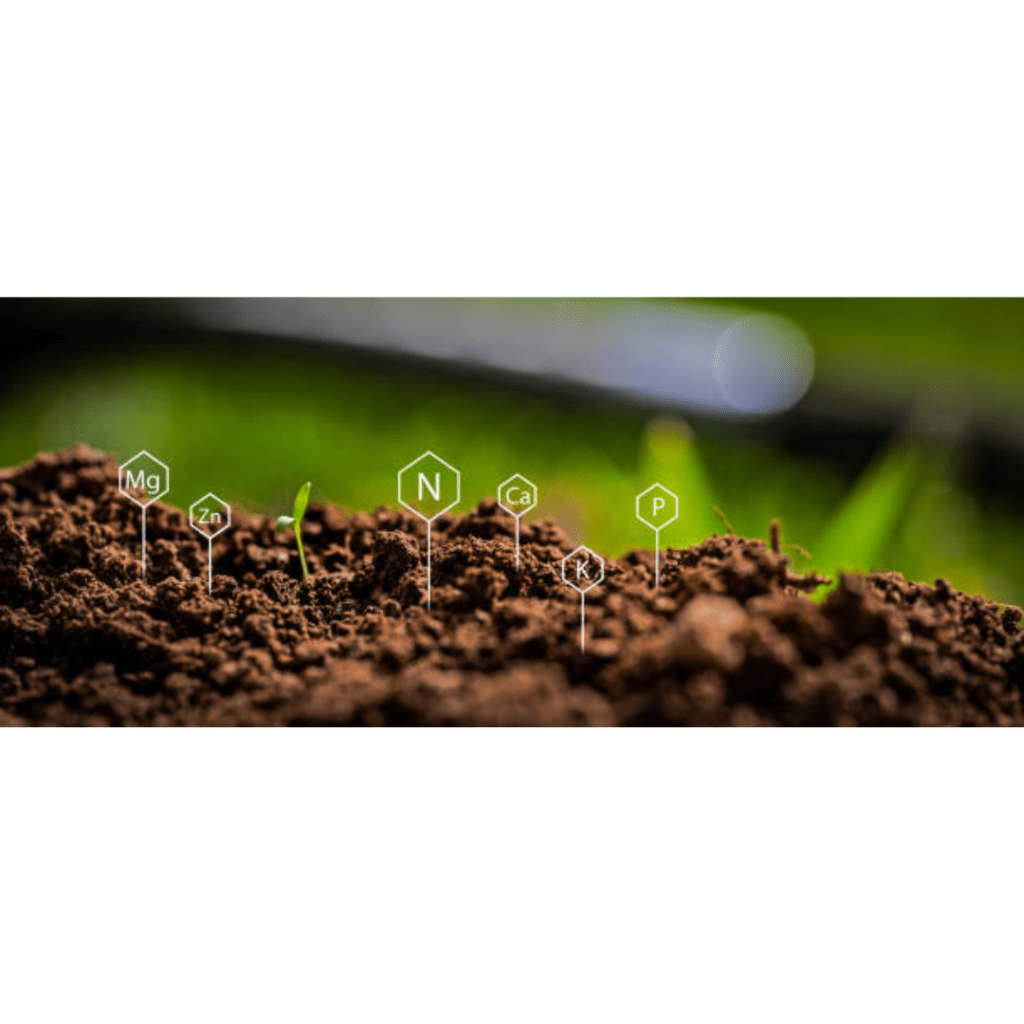
Imagine being able to unlock the secrets of your soil with just a simple kit. Soil testing kits are like the Sherlock Holmes of gardening tools. They help you understand the pH level, nutrient content, and overall health of your soil. Armed with this knowledge, you can make informed decisions about fertilizers and amendments to ensure your plants thrive.
Did you know you can also perform your own DIY soil garden tests with items you may already have in your house? Check out my detailed post on how to test your soil with simple ingredients and tools from your kitchen and garden!
4 Easy DIY Garden Soil Tests to Do Now
Soil testing kits are valuable tools for gardeners, providing essential information about the composition and health of the soil.
Here are reasons why soil testing kits are considered among the best garden tools:
- Accurate Nutrient Analysis: Soil testing kits provide accurate information about the levels of essential nutrients in the soil, including nitrogen, phosphorus, potassium, and micronutrients. This analysis helps gardeners understand the soil’s fertility and tailor their fertilization strategies accordingly.
- pH Measurement: Soil pH is a crucial factor influencing plant nutrient availability. Soil testing kits include pH testing capabilities, allowing gardeners to assess whether their soil is acidic, neutral, or alkaline. This information is essential for selecting plants that thrive in specific pH ranges.
- Customized Fertilization Plans: With detailed nutrient information from soil testing, gardeners can create customized fertilization plans. This targeted approach ensures that plants receive the right nutrients in the right amounts, promoting healthy growth and optimizing yield.
- Preventing Nutrient Imbalances: Soil testing helps identify nutrient deficiencies or excesses, preventing imbalances that can negatively impact plant health. By addressing specific nutrient needs, gardeners can avoid issues like poor fruit development, yellowing leaves, and stunted growth.
- Cost-Effective Fertilizer Use: Armed with soil test results, gardeners can use fertilizers more efficiently. Applying fertilizers based on actual soil needs prevents overuse, saving money and reducing the risk of nutrient runoff that can harm the environment.
- Diagnosing Soil Issues: Soil testing can reveal underlying issues such as salinity, high levels of certain minerals, or the presence of contaminants. Identifying these problems early allows gardeners to take corrective measures and choose plants that tolerate specific soil conditions.
- Optimizing Soil Structure: Soil testing kits assess soil texture, helping gardeners understand whether their soil is sandy, loamy, or clayey. This information guides decisions on soil amendments to improve structure, drainage, and water retention.
- Monitoring Changes Over Time: Regular soil testing enables gardeners to monitor changes in soil health over time. This long-term perspective allows for adjustments in cultivation practices, helping to maintain and improve the overall health of the garden.
- Suitable for Home Gardeners: Soil testing kits are designed to be user-friendly and suitable for home gardeners. They typically provide step-by-step instructions, making the testing process accessible to individuals with varying levels of gardening expertise.
Garden Carts or Wheelbarrows
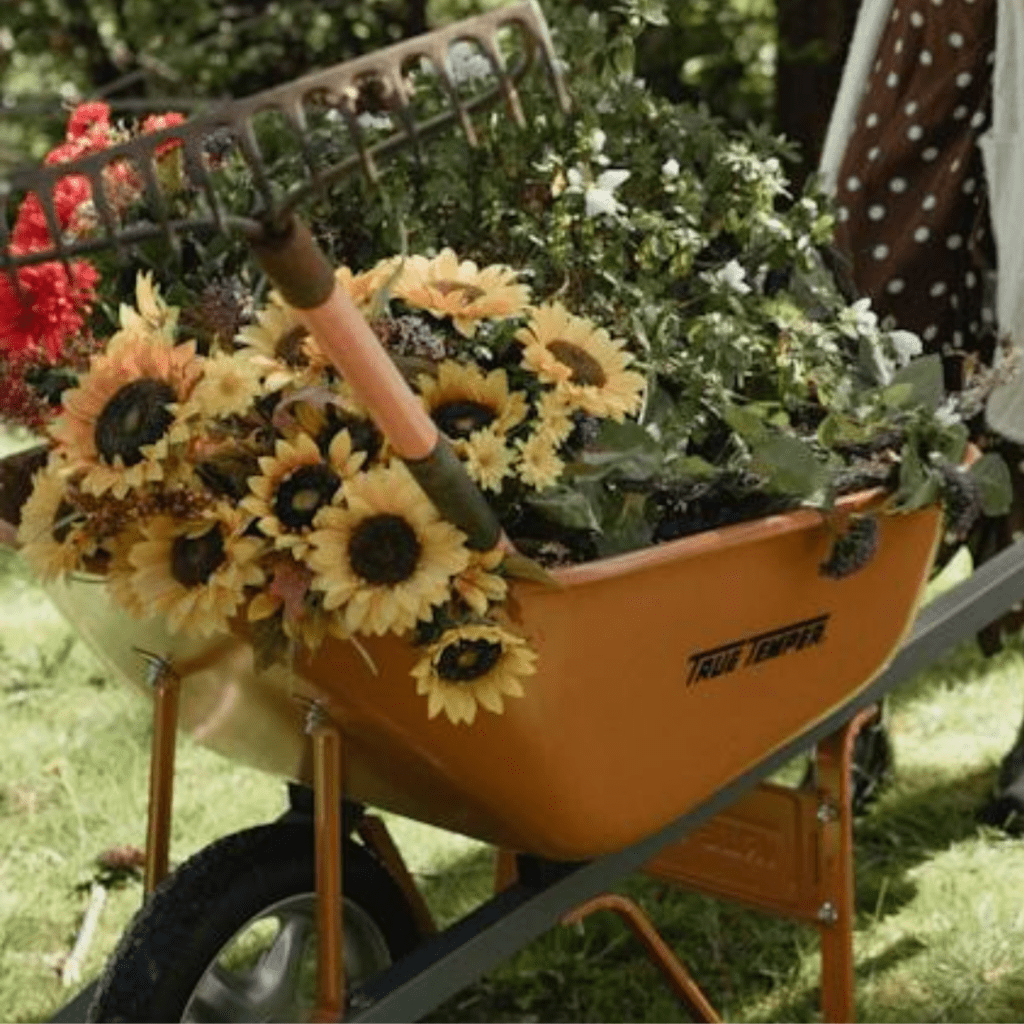
Gardening can involve a fair amount of heavy lifting and hauling. That’s where garden carts or wheelbarrows come in handy. They are like strong, reliable friends who help you transport bags of soil, plants, and other bulky items effortlessly. With a garden cart or wheelbarrow by your side, you’ll save your back from unnecessary strain!
Wheelbarrows are indispensable garden tools with several advantages that make them highly valuable for a wide range of tasks.
Here are reasons why wheelbarrows are considered among the best garden tools:
- Efficient Transport of Heavy Loads: Wheelbarrows are designed to carry heavy loads of soil, mulch, compost, or other materials with ease. Their sturdy construction and wheel placement allow for efficient transportation without putting excessive strain on the gardener.
- Easy Maneuverability: The single wheel at the front of the wheelbarrow allows for easy maneuverability, making it suitable for navigating through narrow paths, around plants, or in confined spaces. This maneuverability is especially valuable in smaller gardens.
- Dumping Capability: Many wheelbarrows are designed with a tilting or dumping feature, allowing the gardener to easily unload the contents. This feature is particularly useful when distributing soil, mulch, or other materials in specific areas of the garden.
- Assists in Construction Projects: Wheelbarrows are invaluable for transporting materials during garden construction projects, such as building raised beds, installing pathways, or constructing retaining walls. Their ability to carry heavy loads makes them essential for these tasks.
- Accessibility for All Ages: Wheelbarrows are suitable for gardeners of various ages and physical abilities. They require less physical exertion compared to carrying heavy loads, making gardening tasks more accessible to a wide range of individuals.
- Reduces Strain on the Body: The design of wheelbarrows encourages a natural and ergonomic posture when pushing or pulling, reducing strain on the back and shoulders. This makes them a more comfortable option for transporting heavy loads.
- Aids in Garden Cleanup: Wheelbarrows are excellent tools for collecting and transporting garden debris, fallen leaves, or pruned branches. This aids in keeping the garden clean and organized, especially during seasonal cleanups.
Tools for Watering and Irrigation
Garden Hose and Nozzle
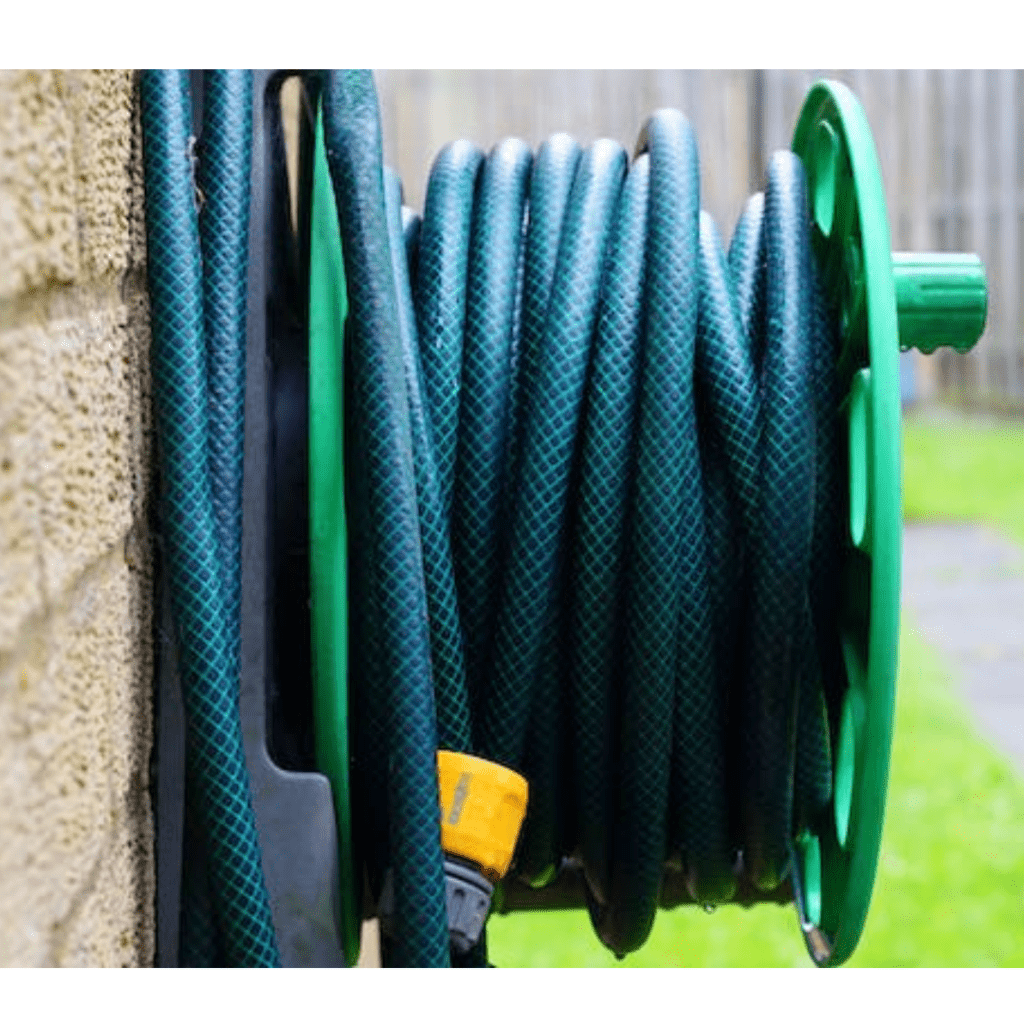
Watering your plants is essential for their survival, and a garden hose with a versatile nozzle is your secret weapon for efficient watering. It’s like having your own personal raincloud. Whether you need a gentle sprinkle or a powerful jet, the right hose and nozzle combo will ensure your plants get just the right amount of hydration.
Sprinklers

If you have a larger garden or want to automate the watering process, sprinklers are your best friends. They’re like the garden party entertainers, effortlessly showering your plants with water. With different types to choose from, such as oscillating or impact sprinklers, you can customize the watering pattern to suit your garden’s needs.
Drip Irrigation Systems
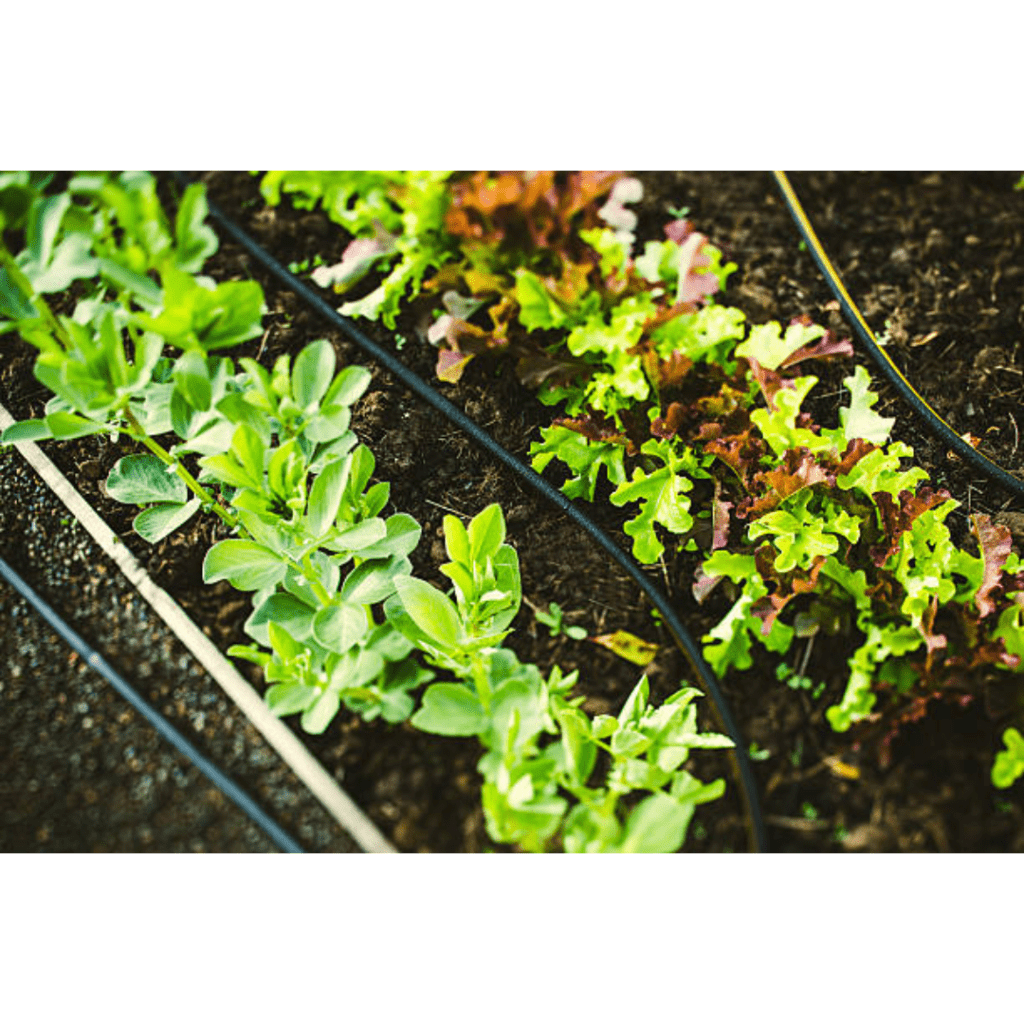
For the ultimate in water conservation and convenience, consider installing a drip irrigation system in your garden. These systems work like tiny garden butlers, delivering water directly to the roots of your plants in a slow and steady manner. They’re efficient, time-saving, and ensure that every drop counts!
Tools for Garden Maintenance and Pruning
Hedge Trimmers
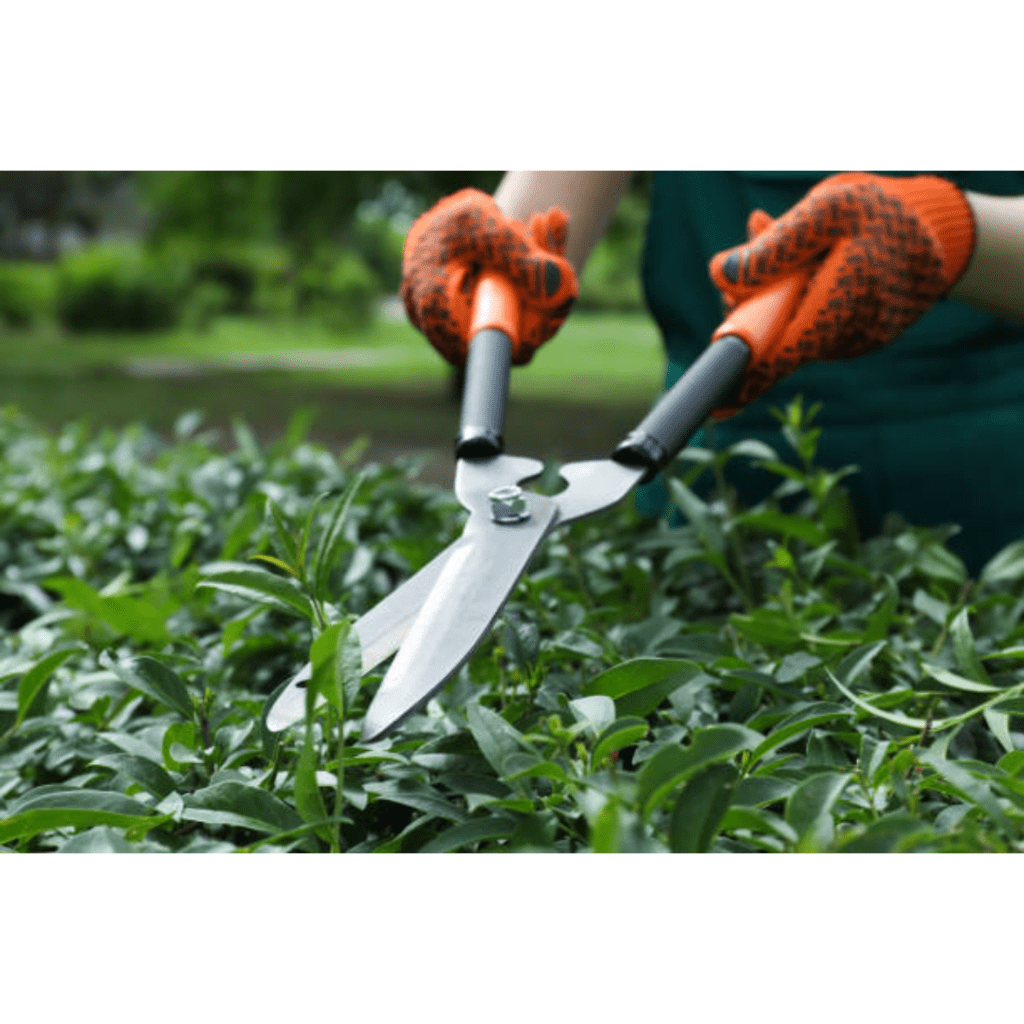
Maintaining a neat and tidy garden requires some pruning skills, and hedge trimmers are like haircutters for your plants. They effortlessly shape hedges, shrubs, and bushes, giving your garden a polished look. With sharp blades and ergonomic handles, hedge trimmers make pruning a breeze.
Loppers
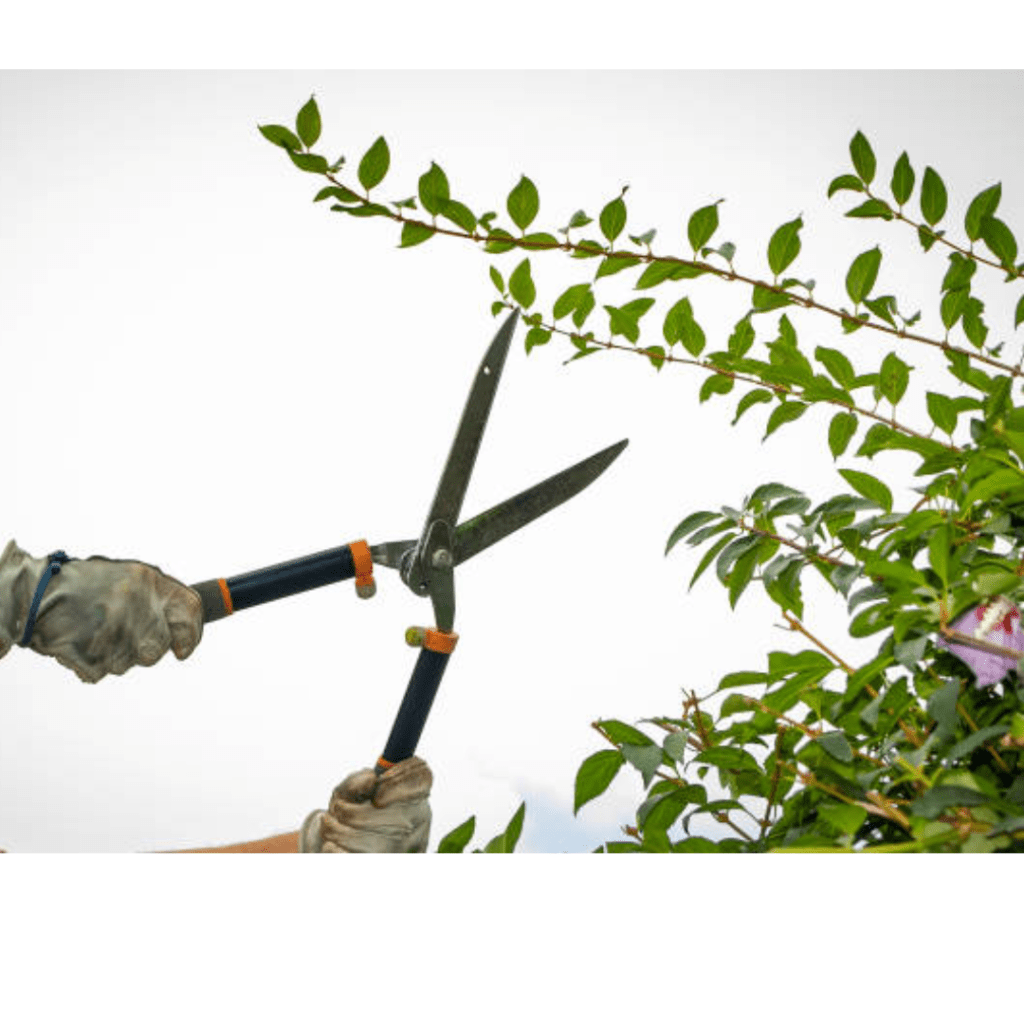
When it comes to pruning thicker branches or removing dead wood, loppers are the heavy-duty tools you need. Think of them as the garden warriors that tackle unruly branches with ease. With long handles and sharp cutting blades, loppers make light work of heavy pruning tasks.
Pruning Saws
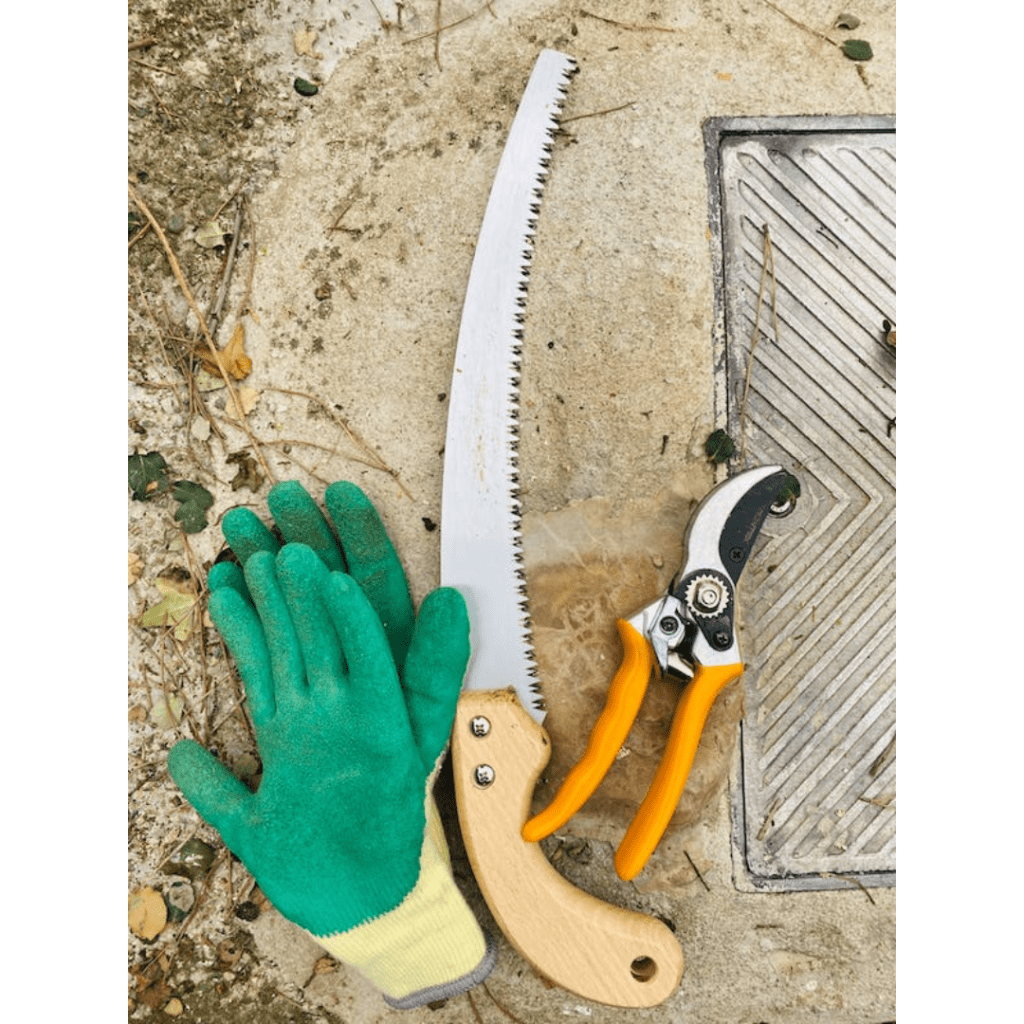
For those hard-to-reach places or when dealing with larger branches, pruning saws come to the rescue. Think of them as the garden ninjas, slicing through tough wood like a samurai sword. With their sharp teeth and compact design, pruning saws allow you to trim branches with precision and ease.
Selecting the Best Garden Tools for Your Needs
Evaluating Your Gardening Requirements
Before you embark on a tool-shopping spree, stop and consider your unique gardening needs. Are you a beginner or an experienced gardener? Do you have a small container garden or a sprawling backyard oasis? Evaluating what tasks you’ll be tackling will help you prioritize which tools are essential for you.
Also, do not let this extensive gardening tool list overwhelm you. Evaluate your gardening needs and obtain the tools necessary to complete the desired tasks that you want to complete first. You can always add to your garden tool collection each season and year as you continue to garden. I have been gardening for years and over the years, I have obtained a nice handy collection that allows me to complete my gardening tasks with ease. Sometimes, I will find myself splurging on a shiny new tool or replacing a worn-out one. Either way, evaluate your needs first and then determine what to shop for.
Budget Considerations
While we all want the finest tools money can buy, it’s essential to set a budget that aligns with your gardening goals. Remember, expensive doesn’t always mean better. Look for tools that offer a good balance of quality and affordability. No need to break the bank when you can get excellent tools within your budget.
Researching and Comparing Different Brands and Models
Like any savvy shopper, it pays to do your research. Spend some time comparing different brands and models of the tools you’re interested in. Read reviews, ask fellow gardeners for recommendations, and consider factors such as durability, warranty, and customer support. Armed with knowledge, you’ll make informed choices and find the perfect tools for your gardening adventures.
Conclusion
In conclusion, investing in high-quality garden tools is a wise decision for any gardener looking to enhance their productivity and achieve successful results. By having the right tools at your disposal, you can efficiently carry out various gardening tasks, from soil preparation and planting to maintenance and pruning. Remember to evaluate your specific gardening needs, consider your budget, and research different brands and models to make informed decisions when selecting your garden tools. Armed with the best tools for the job, you can confidently embark on a productive gardening season, ensuring a flourishing and beautiful garden to enjoy!
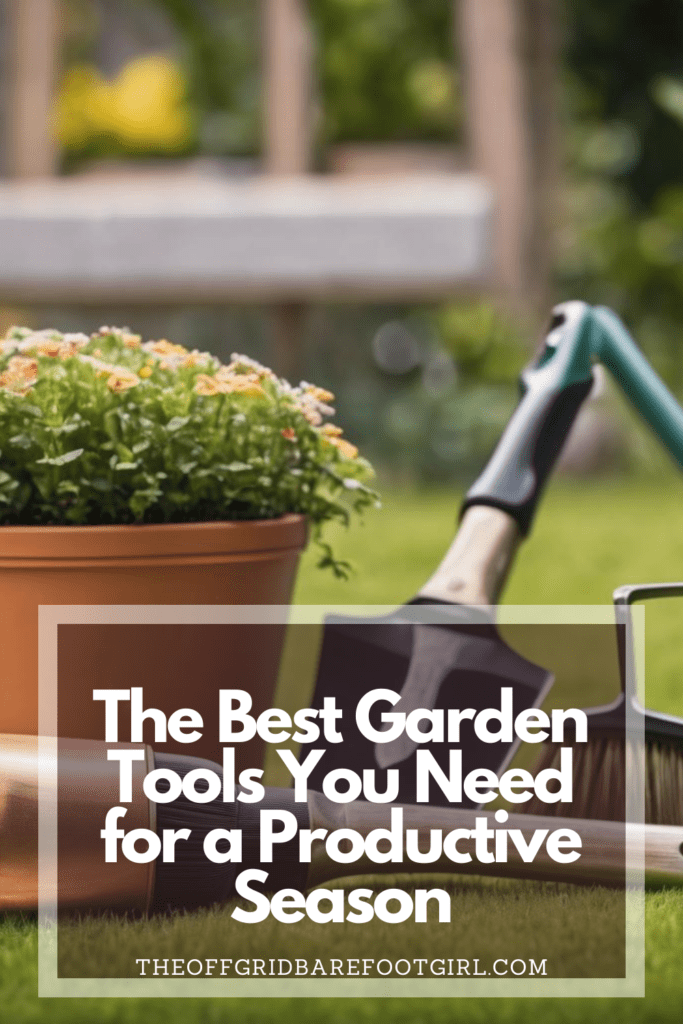
Frequently Asked Questions
1. Why is it important to use the right garden tools?
Using the right garden tools is crucial for several reasons. Firstly, the right tools make gardening tasks more efficient, saving you time and effort. Secondly, they ensure that you can perform tasks correctly, such as proper soil preparation and precise pruning, leading to better plant health and growth. Lastly, using appropriate tools reduces the risk of injury and promotes a safer gardening experience.
2. How do I choose the best garden tools for my needs?
To choose the best garden tools for your needs, consider factors such as the type of gardening tasks you will be performing, the size of your garden, and your personal preferences. Evaluate the quality and durability of the tools, read reviews, and compare different brands and models. Additionally, take budgetary considerations into account to find a balance between quality and affordability.
3. Can I use hand tools instead of power tools for gardening?
Absolutely! Hand tools are essential for every gardener and can be used for a wide range of gardening tasks. While power tools can make certain tasks more efficient, hand tools such as shovels, spades, trowels, and pruners are versatile and can handle most gardening needs. Choose quality hand tools that are comfortable to use and suited to the tasks you frequently perform in your garden.
4. Are there specific tools for different types of gardening?
Yes, there are specific tools designed for different types of gardening. For example, if you have a vegetable garden, tools like garden hoes, row markers, and harvest knives may be particularly useful. If you have a flower garden, tools like pruning shears, garden trellises, and flower snips can be beneficial. Consider the specific requirements of your garden and select tools that cater to those needs.
Summary
I hope I have inspired you to get the best garden tools with these tips and products.
If you were encouraged by this post, I invite you to check out my FREE Printables Page for fun free printables, planners, and charts.
ENTER MY FREE Printables Page HERE
Here are some more of my gardening inspiration posts to check out!
Fastest Growing Vegetables for Your Survival Garden
How to Grow Marigolds As Pest Control In Your Vegetable Garden
Must-Have Tools for a Successful Balcony Vegetable Garden
How to Effectively Combat Powdery Mildew in Your Garden
The Best Tips for Organic Gardening
How to Release Ladybugs In Your Garden for Organic Pest Control
The Best Garden Snail Control Strategies
The Best Spring Vegetables to Grow in Your Garden
Seed Starter Mix: How To Make Your Organic Seed Starter Mix At Home
How to Grow a Productive Canning Garden
How to Plant and Grow a Salsa Garden
Easiest Heirloom Vegetable Seeds to Grow Now
How to Use the Hand Twist Claw Tiller: Tackling Tough Soil
Planning Your Garden: How to Plan a Vegetable Garden: Expert Green Thumb Tips!
Winterizing the Garden: How to Winterize Your Vegetable Garden: Step-by-Step Checklist
Mulching the Garden: How to Make Leaf Litter Mulch
Grow a Pumpkin Patch: How to Grow a Pumpkin Patch in Your Backyard
How to Win a Giant Pumpkin Contest
How to Grow a Fall Garden: 9 Best Fall Crops
Clever Ways to Incorporate Indoor Composting into Your Home
How to Start Composting for the Garden: A Step-by-Step Guide
The Ultimate Guide to Composting in Your Suburban Backyard
Why I Built A Survival Garden in My Backyard
How to Grow A Foodscape Garden From Scratch
16 Best Medicinal Herbs to Grow in Your Garden Now
Blessings,
The Off Grid Barefoot Girl




